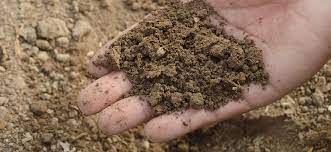 For design, calculating and performing works in the field of shaping surface and earthworks is necessary to know the basic, land properties. The physical properties include: apparent density, grainness, porosity and humidity.
For design, calculating and performing works in the field of shaping surface and earthworks is necessary to know the basic, land properties. The physical properties include: apparent density, grainness, porosity and humidity.
Knowledge of apparent density is important in designing the extraction and transport of soil in earthworks. The apparent density of various lands is given in the table.
The physical properties of land
| Category
land |
Characteristic | Density
attention [t/m3] |
Razor
initial (increase volume) [%] |
Razor
permanently (increase volume) [%] |
| 1 | 2 | 3 | 4 | 5 |
| I | Dry sand without a binder | 1,6 | 8 — 17 | 1-2,5 |
| I | Arable or garden soil | 1,2 | 15-25 | 2-3 |
| I | Peat without roots | 1,0 | 20-30 | 3-4 |
| I | Moist sand | 1,7 | 20 – 30 | 1-2,5 |
| I | Clay sand, Dust and Less moist (Hard -lastic and plastic) | 1,8 | 124-20 | 1-2,5 |
| I | Arable soil with turf or thickness roots to 30 mm | 1,3 | 15-25 | 2-3 |
| II | Peat with roots thick to 30 mm | 1,1 | 20-30 | 3-4 |
| II | Embankment from sand and clay sand with debris, crushing and wood waste | 1,7 | 12- 20 | 2-3 |
| II | Gravel to 25 mm without a binder or coherent mafo | 1,7 | 8-15 | 1-2,5 |
| II | Clay sand, Dust and Less is not moist (semi -hard) | 1,9 | 10-20 | 2-3 |
| II | A cultivated soil with roots thickness above 30 mm | 1,4 | 15- 25 | 2-3 |
| II | Peat with roots thickness above 30 mm | 1,4 | 20-30 | 3-4 |
| III | The embankment got rid of clay sand, Lessu lub gliny, Il with debris, crushing or wood waste | 1,9 | 12-20 | 2-3 |
| III | Weatheel rock and pebbles with dimensions to 40 mm | 1,8 | 25—35 | 4-6 |
| 1 | 2 | 3 | 4 | 5 |
| III | Clay, heavy and moist clay (Hard -lastic and plastic) no boulders | 2,0 | 20-25 | 3-5 |
| III | Mady and sulf | 1,8-2,0 | 20-25 | 3-4 |
| III | Thick pebbles or weatheel rumas with dimensions to 90 mm or with boulders weighing 10 kg; construction debris and debris with blocks to 50 kg | 1,8-2,0 | 27-32 | 5-8 |
| III | Clay, Heavy and not very moist clay (semi -gray and compact) | 2,1 | 28-33 | 9-12 |
| IV | Pimp clay with boulders to 50 kg constituting to 10% soil volume | 2,1 | 28-33 | 8-12 |
| IV | Ił compact dry | 2,1 | 28-33 | 8-12 |
| IV | Soft Iłozek | 2,0 | 30-35 | 10-15 |
| IV | The embankment got rid of clay or debris with debris, fatty and wood waste or boulders weighing up to 25 kg, constituting to 10% soil volume | 2,0 | 20-30 | 5-10 |
Granation is the degree of ground fragmentation expressed in the percentage of various fractions, that is, grain groups of fixed sizes. Mineral soils are divided in the norm regarding construction land. The physical and mechanical properties of the soil depend on the grainness.
Porosity is determined by the ratio of the volume of steam, that is, free spaces, to the total volume of the ground. The degree of porosity depends on the shape of the grains and their compaction. Porosity condition is associated with the concept of loosening, which arises during the decay of the land and can persist for a long time. A distinction is made between initial and durable loosening. The level of loosening of various lands is given in the table.
Humidity is determined by the ratio of the mass of water and to the mass of dry soil. The ratio of water volume in the ground to the volume of the pores is called moisture. The condition and mechanical properties of the soil depend on the degree of humidity. Social land (gliniaste, lane) due to different degrees of humidity, they can have different consistency (compact, plastic, smooth).